
views
X
Research source
and basic arithmetic. This same basic process will come in handy for all math and science classes, as well as everyday life.
Converting Millimeters to Inches
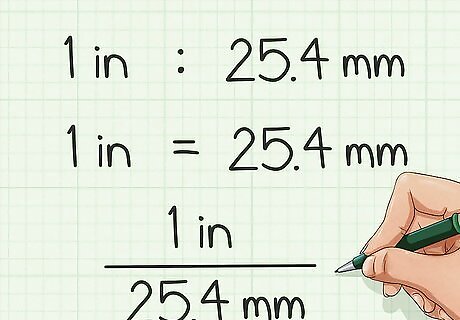
Learn the conversion factor. One inch is the same length as 25.4 millimeters. You can write this "conversion factor" as a fraction: 1 i n c h 25.4 m m {\displaystyle {\frac {1inch}{25.4mm}}} {\frac {1inch}{25.4mm}}. Any two units have a special conversion factor for converting between them. If you don't know what it is, you can look it up online or in a textbook.
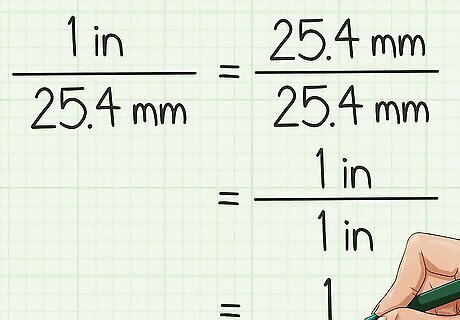
Understand the conversion factor. The top and bottom of the fraction are the same length, just written in different units. This means the fraction is equal to 1, just like the fractions 3 3 {\displaystyle {\frac {3}{3}}} {\frac {3}{3}} or 8 8 {\displaystyle {\frac {8}{8}}} {\frac {8}{8}} simplify to 1. Remember, multiplying a number by 1 doesn't change its value. That means you can multiply your measurement by this factor and the length will be the same. The only difference is the units: your answer will be written in inches instead of millimeters.
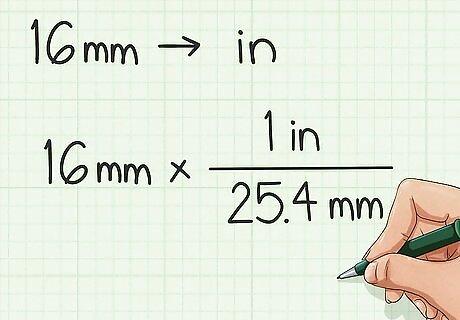
Write down the multiplication problem. Make sure to write down all units in your measurement. For example, here's what you would write down to convert 16 millimeters (mm) into inches (in): 16 mm x 1 i n 25.4 m m {\displaystyle {\frac {1in}{25.4mm}}} {\frac {1in}{25.4mm}} = ?
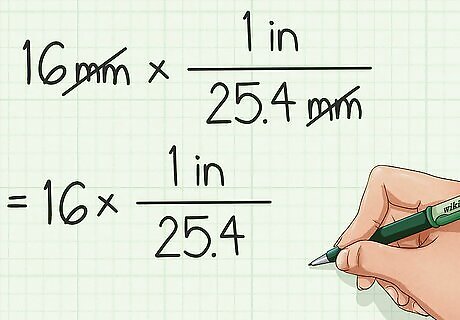
Cancel out the units. If the same unit appears on the top and bottom of a fraction, they cancel out. If you've set up your problem correctly, the millimeters will cancel out and you'll be left with just inches. 16 mm x 1 i n 25.4 m m {\displaystyle {\frac {1in}{25.4mm}}} {\frac {1in}{25.4mm}} = ? Cancel out the millimeters:16 x 1 i n 25.4 {\displaystyle {\frac {1in}{25.4}}} {\frac {1in}{25.4}} = ? Since the only unit left is inches, your answer will be in inches.
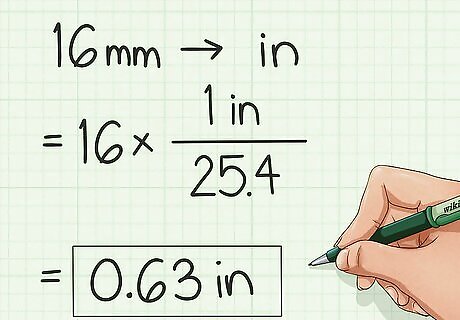
Solve the problem. Finish the math problem by hand or on a calculator. 16 x 1 i n 25.4 {\displaystyle {\frac {1in}{25.4}}} {\frac {1in}{25.4}} = 16 in ÷ 25.4 = about 0.63 inches
Estimating in Your Head

Memorize useful conversions. If you can remember that 1 mm = 1 25.4 {\displaystyle {\frac {1}{25.4}}} {\frac {1}{25.4}} inches, that's great. But this conversion doesn't come up very often. It's more useful to memorize these common conversions: 1 cm = about 0.4 inches 1 cm = 10 mm 1 inch = exactly 2.54 cm (you don't need this for this conversion, but it's a good one to know)

Convert millimeters to centimeters. This is easy to do in your head. Just divide the millimeter measurement by 10. All you have to do is move the decimal point one digit to the left. If you're not sure why this works, look at this example: 430 mm= 430 mm x 1 c m 10 m m {\displaystyle {\frac {1cm}{10mm}}} {\frac {1cm}{10mm}}= 43 cm.
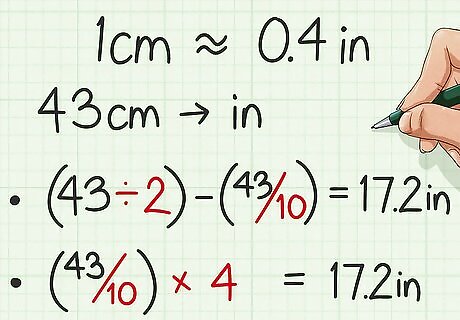
Estimate the centimeter to inch conversion. The 1 cm = 0.4 in is close enough for most purposes. But how do you multiply by 0.4 in your head? Here are two different ways to do it, continuing with the same example: Divide by two, then subtract 1/10 of the cm value: 43 cm ÷ 2 = 21.5→ 1/10 of 43 is 4.3→ subtract the second number from the first: 21.5 - 4.3 = 17.2 in. Or divide by ten, then multiply by four:43 cm ÷ 10 = 4.3→ 4.3 x 4 = (4 x 4) + (0.3 x 4) = 16 + 1.2 = 17.2 in.
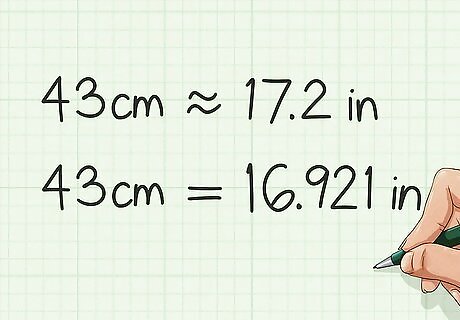
Understand that this is an estimate. Learning how to do this will come in handy for quick real-life estimates, where the exact answer is usually not important. It's not a good idea for homework problems that require an exact answer, but you can use it to double check your answer and make sure it's in the right ballpark. In the example, the exact answer is actually 16.921 inches. The estimate is less than a third of an inch off, which is pretty good for mental math.


















Comments
0 comment